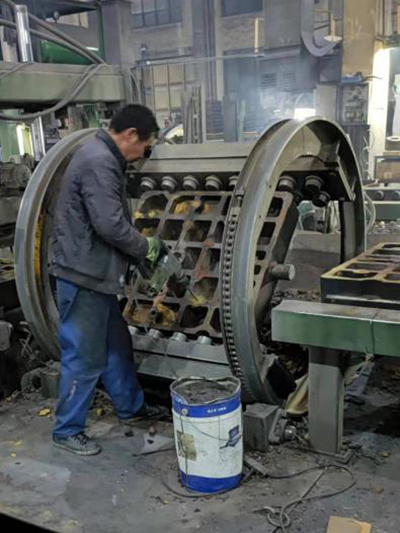3D Printing with Sand Revolutionizing Manufacturing and Construction
In recent years, the world of 3D printing has exploded with innovation, pushing the boundaries of what is possible in manufacturing and construction. One particularly exciting development is the use of sand in 3D printing. This process not only offers a sustainable approach to creating complex structures but also opens up a myriad of applications across various industries.
The Process of 3D Printing with Sand
3D printing with sand typically employs a technique known as binder jetting. In this process, a print head moves over a layer of sand, selectively depositing a binding agent that causes the sand particles to adhere to each other. Once a layer is completed, the platform lowers, and a new layer of sand is added on top. This method continues until the object is fully formed, at which point it is cured, often using heat, to enhance its strength.
One of the significant advantages of using sand is its availability; it is one of the most abundant natural resources on the planet. Furthermore, the properties of sand allow for the production of highly intricate designs that would be challenging or impossible to achieve with traditional manufacturing methods.
Environmental Sustainability
One of the most pressing issues faced by industries today is sustainability. The construction industry, in particular, is responsible for a significant portion of global waste and environmental degradation. Utilizing sand for 3D printing presents an eco-friendly alternative. The process can minimize waste, as the precise nature of 3D printing ensures that only the necessary amount of materials is used. Moreover, it allows for the recycling of materials, as leftover sand can often be reused in subsequent prints.
Additionally, many companies are exploring the use of recycled sand or alternative eco-friendly materials to reduce their carbon footprint. This is particularly important as the world moves towards more sustainable practices in the wake of climate change.
3d printing with sand

Applications Across Industries
The applications of 3D printing with sand are vast and varied. In the construction industry, for instance, companies are experimenting with using sand-based 3D printing to create entire buildings, reducing labor costs and construction time significantly. This technology can produce complex geometries that enhance structural performance while also allowing for unique architectural designs.
In the realm of manufacturing, sand 3D printing is increasingly utilized to create molds for metal casting. Traditional mold-making processes can be time-consuming and resource-intensive. However, with sand 3D printing, companies can produce molds quickly and at a lower cost. This method is particularly beneficial for custom or small-batch production runs, where traditional methods may not be feasible.
Innovations and Future Prospects
As the technology behind 3D printing continues to evolve, so do the possibilities for sand-based applications. Researchers and companies are constantly developing new techniques and materials to improve the process. For instance, advancements in binding agents and curing methods can lead to even stronger final products and a wider range of applications.
Moreover, as industries strive for greater sustainability, sand 3D printing could play an essential role in future developments. It's anticipated that with ongoing research and investment, sand-based 3D printing will become even more efficient and widely adopted, paving the way for a new era of manufacturing and construction.
Conclusion
3D printing with sand represents a significant step forward in manufacturing and construction, offering sustainable solutions while enabling the creation of complex designs. With its potential to revolutionize various industries and reduce environmental impact, sand-based 3D printing is poised to play a crucial role in the future of production. As technology advances and the demand for eco-friendly practices grows, it is clear that the sands of time are shifting toward innovation and sustainability.
Post time:نوامبر . 19, 2024 20:47
Next:ceramsite
